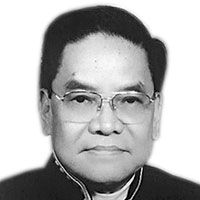‘Chemobrain’ may start before chemotherapy

The muddled thinking that sometimes affects breast cancer patients is manifested by decreased activity in a brain region that plays a key role in working memory, according to results of a functional imaging study.
“Chemobrain,” as it’s sometimes known, appears even before chemotherapy starts, suggesting that more may be at play than a cognitive reaction to the medications, reported.
In her study, functional imaging showed a strong correlation between fatigue and decreased activation in the left inferior frontal gyrus.
There’s no question that chemotherapy agents can have cognitive effects, said, associate professor emeritus of nursing at the Un!versity of Michigan, Ann Arbor. “But even before treatment, we saw reduced function in the regions needed to perform this task.”
Her prospective comparative study comprised 69 women with localized (stage 0-111) disease and 32 age-matched healthy controls. Patients were 24-34 days post surgery but had not yet received chemotherapy (29) or radiotherapy (37).
Before and after treatment, the patients performed a verbal test of working memory while undergoing functional MRI both before and after treatments. Each test had several difficulty levels. Patients also self-reported fatigue at both time points.
The patients averaged 51 years old. Half of the chemotherapy group and 95% of the radiotherapy group had undergone a breast conserving surgical procedure. The other half of the chemotherapy group had mastectomies. The subjects performed the Verbal Working Memory Task during scanning. Following the scan, they completed the Attentional Function Index and the Functional Assessment of Cancer Therapy Fatigue.
Compared with radiotherapy and control groups, the chemotherapy group reported more fatigue at both time points and performed significantly more poorly on the cognitive test at both time points (P less than .05). Greater fatigue in the chemotherapy group was positively associated with and correlated with poorer cognitive performance; the difference was significant in the post treatment period (P=.03).
The radiotherapy group performed significantly better than the chemotherapy group, and significantly worse than the control group. Fatigue scores also fell between those of the chemotherapy group and the control group.
Imaging showed a positive correlation between poor cognitive performance and decreased activity in the left anterior frontal interior gyrus. The score differences in the chemotherapy group “were mainly due to lower pretreatment activation in an area of the prefrontal cortex supporting working memor, the anaromical left inferior frontal gyrus, at the higher task demand,” said at a press briefing.
The level of inactivation in the region also significantly predicted the severity of fatigue in both treatment groups (P less than .0l). The post-treatment imaging, conducted about 5 months after the baseline assessment, showed on no differences in brain activation. However, those who had the highest posttreatment fatigue.
- Latest
- Trending



























